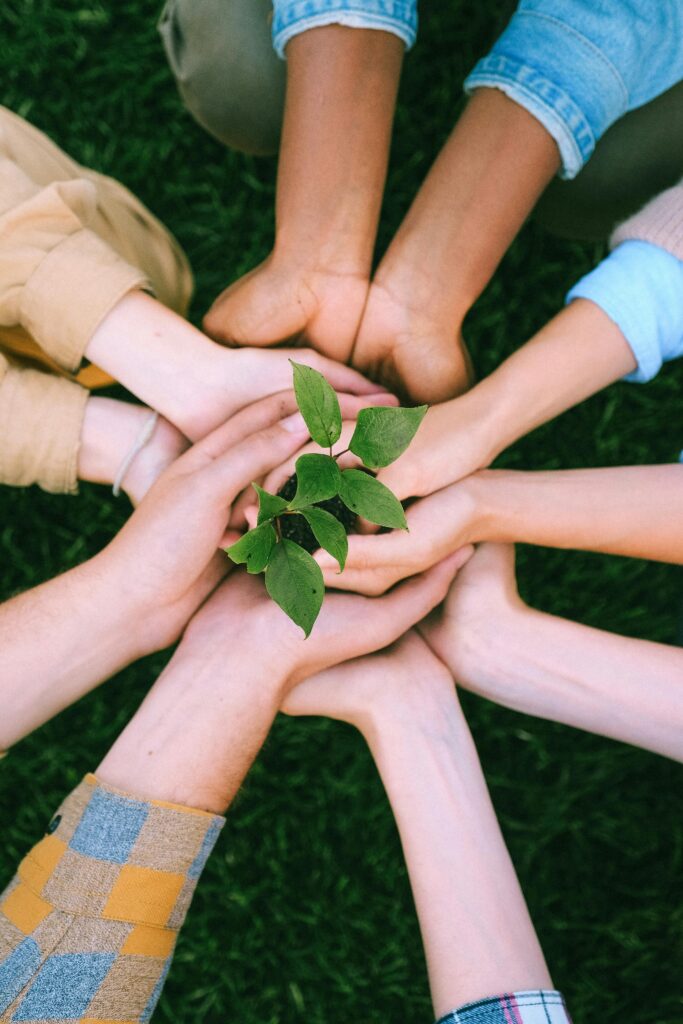paper bags
Discover why food-grade and eco-friendly packaging matter, explore key types, materials, and brands, and compare disposable bags vs sustainable solutions for food items.

The Complete Guide to Paper Bags
Paper bags have become a staple in modern packaging, offering both practicality and sustainability. Whether you’re running a retail store or planning an event, paper bags and paper gift bags are essential for branding and eco-friendly presentation.
What Are Paper Bags Made Of?
Most paper bags are made from kraft paper — a strong, recyclable material derived from wood pulp. Unlike plastic bags, paper bags are biodegradable and recyclable, which makes them an environmentally responsible choice. According to the U.S. Environmental Protection Agency (EPA), using recyclable materials like paper reduces waste and conserves energy.

Types of Paper Bags
Nowadays, there are many materials for paper bags, what can be made into paper bags?
Kraft Paper
Uses:
Packaging, shopping bags, wrapping, envelopes
Common GSM:
40–200 gsm
Environmental Friendliness:
Very eco-friendly; made from unbleached pulp and highly recyclable
Often used for sustainable packaging
Different GSM Uses:
40–80 gsm → wrapping, lightweight bags
100–150 gsm → envelopes, medium-duty bags
150–200 gsm → packaging boxes, heavy-duty bags

Coated Paper (Glossy / Matte)
Uses:
Magazines, brochures, catalogs, posters
Common GSM:
80–300 gsm (depending on purpose)
Environmental Friendliness:
Coating (usually clay or plastic) reduces recyclability and biodegradability
Matte coatings are typically more eco-friendly than glossy ones
Different GSM Uses:
90–150 gsm → magazines, brochures
200–300 gsm → covers, posters

Cardstock (a.k.a. Cover Paper / Bristol Board)
Uses:
Business cards, postcards, invitations, packaging, covers
Common GSM:
150–400 gsm
Environmental Friendliness:
Thicker, so uses more pulp per sheet
Often available in recycled or partially recycled varieties
Different GSM Uses:
150–200 gsm → light covers, menus
250–300 gsm → business cards, postcards
350–400 gsm → packaging boxes, premium cards

Art Paper (High-Quality Coated Paper)
Uses:
High-end printing, art books, photo printing
Common GSM:
100–300 gsm
Environmental Friendliness:
Coating reduces recyclability
Some manufacturers offer FSC-certified or recycled-coated versions

Seed Paper (Plantable Paper)
Seed paper is handmade or machine-pressed paper embedded with plant seeds (commonly wildflowers, herbs, or vegetables). When planted in soil, it decomposes naturally and the seeds germinate, producing plants.
Uses:
Flyers, greeting cards,, letterheads, event invitations, stationery, Business cards, bookmarks, promotional cards, packaging inserts,Tags, postcards, eco-friendly packaging, product labels,Gift tags, folding cards, or packaging boards with strong presentation quality,paper bags,paper boxes
Common GSM:
70–350 gsm
Potential Environmental Concerns:
If overprinted with non-biodegradable inks (e.g., petroleum-based inks), recyclability and compostability can be compromised.
Inappropriate seed choices (non-native or invasive species) can affect local ecosystems — responsible manufacturers choose native or region-appropriate seeds.
Eco-Optimization Tips:
Use soy-based or water-based inks for printing.
Source regionally appropriate seeds.
Avoid lamination or coating, which prevents germination.
Environmental Friendliness:
100% biodegradable, compostable, and promotes plant growth
Note:
The paper’s thickness and texture depend not only on GSM but also on the type and density of seeds — larger seeds (like marigold or basil) require looser, thicker paper to ensure germination space.




Why Choose Paper Bags Over Plastic?
When comparing paper bags vs plastic bags, paper wins in sustainability. Paper decomposes faster, poses less harm to wildlife, and is easier to recycle. Modern paper bag manufacturers also use sustainable sources and water-based inks for printing.
You can find customized paper bags with logo or wholesale gift paper bags that reflect your brand’s values while supporting eco-friendly initiatives. Learn more about sustainable packaging practices from GreenBlue’s Sustainable Packaging Coalition.
| Category | Paper Bags | Plastic Bags |
|---|---|---|
| Raw Material Source | Made from wood pulp, typically sourced from trees; can also be made from recycled paper pulp | Made from petroleum or natural gas derivatives (polyethylene, polypropylene) |
| Renewability | Renewable if sourced from managed forests or recycled fibers | Non-renewable, derived from fossil fuels |
| Production Energy Use | Requires more energy and water to produce than plastic bags | Uses less water and energy per unit to manufacture |
| Degradation Rate | Biodegrades in 2–6 months (depending on environment) | Takes 10–1,000 years to degrade (depending on type and exposure) |
| Recyclability | Easily recyclable and compostable | Technically recyclable but often not economically viable; many end up in landfills |
| Environmental Hazards | Deforestation risk if not sustainably sourced; contributes to carbon footprint during pulping | Causes microplastic pollution; harmful to marine and terrestrial ecosystems |
| Durability & Reuse | Less durable when wet; reusable a few times | Very durable, reusable many times before breaking |
| Weight Capacity | Heavier and bulkier; limited strength for heavy items | Lightweight; strong for its weight |
| Cost per Bag (Approx.) | $0.05–$0.25 (depending on GSM, size, and print) | $0.01–$0.05 (mass-produced HDPE/LDPE types) |
| Overall Sustainability | More eco-friendly if recycled or composted properly | Less eco-friendly; longevity and pollution issues outweigh low production cost |
Why Choose Environmentally Friendly, Biodegradable Food Grade Materials, And What is Their Environmental Contribution?
In Recent Years, Sustainable Food Packaging Has Moved From Nice-To-Have To Must-Have. Here’s Why:
Retail & Shopping
Examples & Applications:
Supermarkets, boutiques, clothing stores, bookstores, grocery outlets
Advantages:
• Reusable and recyclable
• Enhances brand eco-image
• Sturdy enough for most goods

Food & Beverage Packaging
Examples & Applications:
Bakery bags, takeaway bags, sandwich wraps, coffee cups, lunch sacks
Advantages:
• Safe for food contact
• Breathable (reduces moisture buildup)
• Can be composted with organic waste

Advertising & Branding
Examples & Applications:
Custom printed bags for promotions, product launches, and events
Advantages:
• Acts as a walking advertisement
• High visibility and aesthetic appeal
• Supports green marketing image

Waste Collection & Composting
Examples & Applications:
Used for collecting kitchen scraps or garden waste
Advantages:
• Compostable along with contents
• Avoids plastic contamination in compost
• Encourages zero-waste behavior

Industrial & Bulk Packaging
Examples & Applications:
Multi-wall kraft paper sacks for cement, flour, or fertilizers
Advantages:
• High strength and tear resistance
• Allows for stacking and storage
• Reduces plastic dependency

Creative & Decorative Uses
Examples & Applications:
DIY crafts, handmade packaging, eco art projects
Advantages:
• Easy to cut, fold, and decorate
• Popular for sustainable crafts
• Safe and biodegradable materials

Gift & Event Packaging
Examples & Applications:
Gift bags, wedding favor bags, corporate giveaways
Advantages:
• Elegant and customizable
• Available in various textures and colors
• Recyclable and biodegradable

Pharmaceutical & Health Products
Examples & Applications:
Medicine paper bags, small item carriers in pharmacies
Advantages:
• Hygienic and single-use
• Easy labeling for safety and dosage info
• Eco-friendly alternative to plastic pouches

Agricultural & Seed Packaging
Examples & Applications:
Small grain or seed bags, organic product wrappers
Advantages:
• Breathable and moisture-absorbent
• Biodegradable
• Often paired with eco-friendly branding

The Future of Paper Packaging
With growing demand for environmentally friendly packaging, paper bags continue to evolve. From custom laminated paper bags to biodegradable paper bags, manufacturers are pushing innovation toward a greener, more sustainable future.
You don't know how to start customizing?
Check Here



We Love to Hear From You
You can write down your detailed requirements in the message, for example, style, material, size, quantity, printing requirements, etc. You can also leave accurate contact information, we will contact you within 24 hours!
Leave A Message

